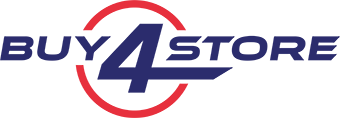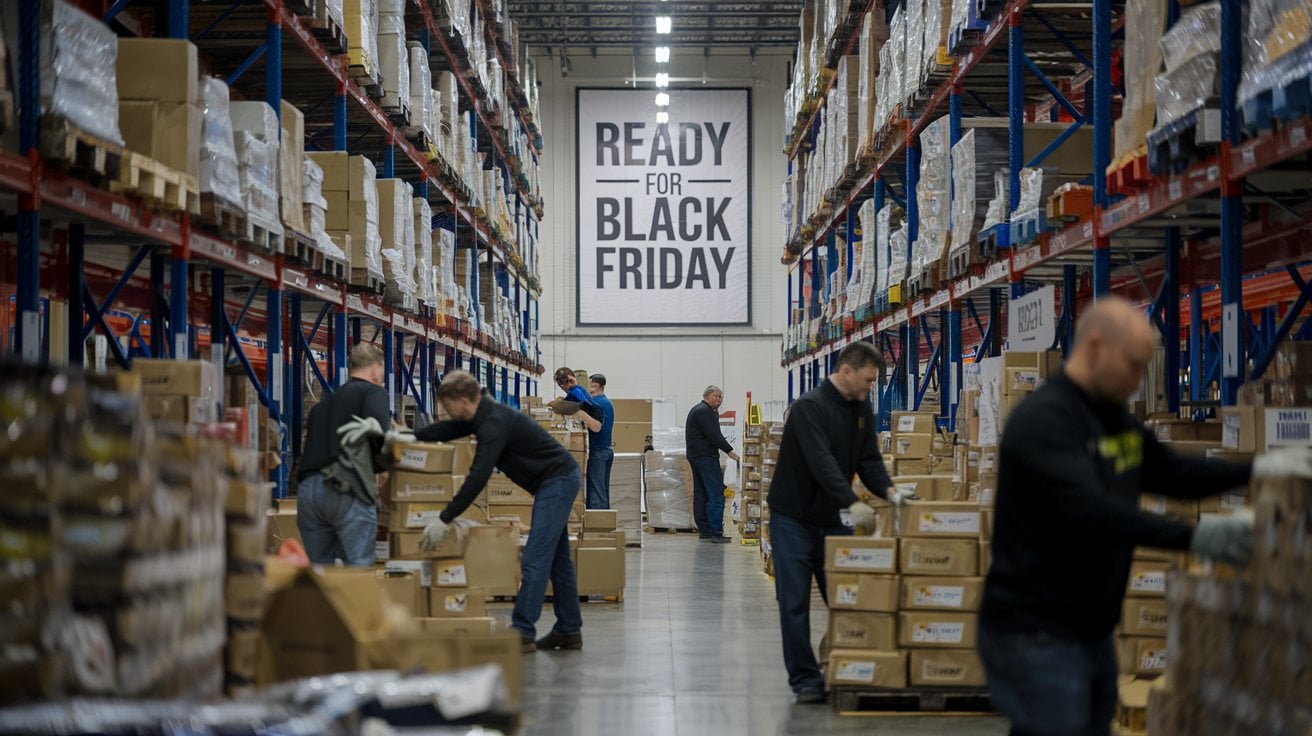As the holidays approach, retailers begin to prepare for Black Friday—one of the busiest shopping events of the year—which tightens the pressure on wholesale suppliers. To ensure that demand grows without causing a logistical bottleneck, supply chain optimization is necessary.
Well-prepared wholesale operations and supply chains can be the difference between capitalizing on the seasonal rush and missing out on valuable sales opportunities. In this guide, you will learn practical ways to streamline your operations, boost productivity, and how to prepare for Black Friday madness without breaking a sweat.
Assessing Your Current Supply Chain
Before hitting Black Friday wholesale, it’s important to consider your current supply chain and if it can handle the spike in demand. In this section, we’ll consider how to audit your supply chain with the view to finding out bottlenecks, reviewing the past Black Friday performance of a company, and ensuring smooth operations for the coming holiday rush.


Conduct a Supply Chain Audit
You need to keenly look into all areas, including procurement, warehousing, and logistics, for any weaknesses. Here's how to conduct a comprehensive audit:
Acquisition: Review your vendors or suppliers. Analyze lead times, price agreements, and increased production capabilities on a seasonal cycle. Look at past performances: Were there any delays with suppliers or shortages of products? Further, ensure that your suppliers are on sound financial footing and dependable to prevent last-minute hiccups.
Inventory Assess: Evaluate your inventory system for effectiveness. Ensure that your inventory levels are optimal—sufficiently stocked to meet demand but not so high that they tie up valuable capital.
Is your warehouse organized for productivity? Are frequently used items stored together for easy access? A Warehouse Management System (WMS) can also be installed or upgraded to track stock in real time, helping to avoid errors and improve the workflow related to order fulfillment.
Logistics: Shipping and fulfillment are key to any successful Black Friday. Take the time now to review your current shipping partners—are they set up to handle an influx of orders? Review their on-time delivery rates and costs. Of equal importance, audit internal fulfillment processes—are there any bottlenecks in order processing?
Identify Bottlenecks and Weak Points
A bottleneck is a point in the supply chain where the rate of processing slows down, causing delays and inefficiencies. Bottlenecks can significantly impact lead times and customer satisfaction, especially during high-demand periods like Black Friday.
To identify them, here are some of the recommended methods:
Mapping Processes: This is where you are supposed to make a diagrammatic representation of the processes that are involved in your supply chain. This helps identify stages that are moving more slowly than anticipated, allowing you to pinpoint where improvements can be made.
Data Analysis: The information should be analyzed according to different KPIs, like the fulfillment times of orders and/or the rates of inventory turnover. Patterns pointed out at which stage the delay is happening and overall performance impact.
Feedback Systems: Employees who are regularly a part of the supply chain must be surveyed through questionnaires or discussions to get grassroots-level insights and find out practical issues that data can't provide.


Analyze Past Black Friday Performance
Start by analyzing stockouts from previous years to identify which items were frequently sold out and the main causes of those stockouts—whether due to forecasting inaccuracies or delayed shipments. This will help you adjust your stock levels.
Delivery performance analysis: Assess whether shipments were delivered on time or delayed. For those that experienced delays, examine the frequency by supplier and mode of transport to identify areas for improvement.
You can also evaluate the accuracy of your product demand forecasts by comparing forecasted values against actual sales. Deviations in seasonal trends or market fluctuations can be analyzed to enhance your forecasting methodology. Understanding how does Black Friday work can further inform your strategies.
Strengthening Supplier Relationships
It is essential to evaluate the supply chain well in advance of Black Friday to effectively meet the heightened demands of the season. This thorough assessment will illuminate both strengths and weaknesses in your current operations, enabling you to develop a robust inventory strategy that aligns with anticipated sales volumes.
Here, we are going to discuss how to review supplier relationships with a key focus on proactive communication, negotiation of favorable terms, and diversification.
Communicate Your Needs Early
Reaching out to your suppliers well in advance of Black Friday is crucial for avoiding last-minute disruptions. First, make early disclosures of your forecasted demand, the volumes of orders you expect, and any changes in product specifications. This proactive approach gives suppliers sufficient time to adjust production schedules, secure materials, and ensure timely deliveries, ultimately setting the stage for a smoother sales process.
It is also important to mention any promotional or marketing activities that will drive additional demand. Suppliers should understand not only what you are ordering but also why is black friday important for your business, so they can plan accordingly.
Negotiate Favorable Terms
When negotiating with suppliers for Black Friday, ask for better pricing, flexible payments, and shipping priority. Using your potential volume, try requesting bulk discounts or lower per-unit costs. That could be one way to manage your expenses during the busy season.
Other than price, negotiate extended payment terms that would allow some relief on cash tightness. For example, adding 30-60 days to the bill date would give some breathing room after the holiday rush.
Negotiate shipments in your agreement as well. Early discussion of the delivery timelines will make your orders first on the list to dispatch. Good terms include early delivery guarantees, reduced shipping rates, or faster shipping options.


Consider Diversifying Suppliers
It is also dangerous for its reliance on the supplies of stock from one supplier, especially for high-demand periods like Black Friday. Diversification mitigates the risk of disruption caused by delays, shortages, or logistical concerns. By having different suppliers, the business will be much better placed to adapt flexibly if setbacks are experienced with a particular supplier.
First, analyze your current supply chain and identify those suppliers for whom a second-source supplier would be important to have. Next, find other suppliers based on their reliability, price, and capacity to supply you in peak periods. Developing relationships with second sources allows you to rest assured that options are available should one of your key suppliers encounter problems.
Streamlining Inventory Management
As customer demand for products continues to rise, maintaining adequate stock levels becomes increasingly crucial. You want to ensure that your inventory is neither too low—risking lost sales and dissatisfied customers—nor too high, which can tie up valuable cash flow and lead to excess stock that may become obsolete. Striking this delicate balance is essential for sustaining your business's financial health and operational efficiency. In this section, we'll explore practical strategies to help you strike that perfect balance.
Use Inventory Management Software
In fact, it's incomprehensible to imagine inventory management without the implementation of inventory management software, especially on Black Friday sales, as it will help track real-time stock and automate reorder creation.
A few key functionalities you can look out for in such a solution include real-time inventory tracking, demand forecasting, and automated low-stock alerts. Such tools grant you the ability to have the appropriate quantity of inventory on hand and avoid stocking out, with the goal of keeping business operations running smoothly. More advanced analytics will enable deeper insight into past sales trends, thus empowering your demand forecasting and allowing you to make wiser purchasing decisions.
Implement Just-in-Time Inventory Practices
The Just-in-Time approach to inventory helps reduce storage costs while maintaining sufficient inventories of stock. Under the JIT concept, one receives goods at the time they are needed for use.
Therefore, it minimizes excessive inventories and holding costs. Ensure good relations with reliable suppliers who can have rapid responses to needs for an effective JIT. Prepare for black friday; expect very high demand; therefore, be in close contact with suppliers for timely deliveries. A lot fewer and more frequent orders would better suit the sale trend of your product to avoid stockouts while keeping a minimum level to avoid significant storage costs.


Plan for Seasonal Trends
The ways to increase sales on Black Friday, one will have to plan his inventory based on seasonal trends and consumer behaviors. First, access your past sales data and get an idea of which products are in most demand during this season. Based on this history and following the market trend, generate some accurate demand forecasts. Be vigilant for the latest emerging trends- maybe some popular product categories or changes in consumer preference-since these might become a reason for shifting purchasing behavior.
The other seasonal patterns that can also be exploited as how to increase sales - using promotional drives. If there are items that traditionally do well on Black Friday, you stock up accordingly in advance. The best way to handle your trend-based needs is to plan your inventory ahead of time, so it meets or aligns with your customer demand and optimizes your sales potential heading into the holiday season.












0 Comment(s)